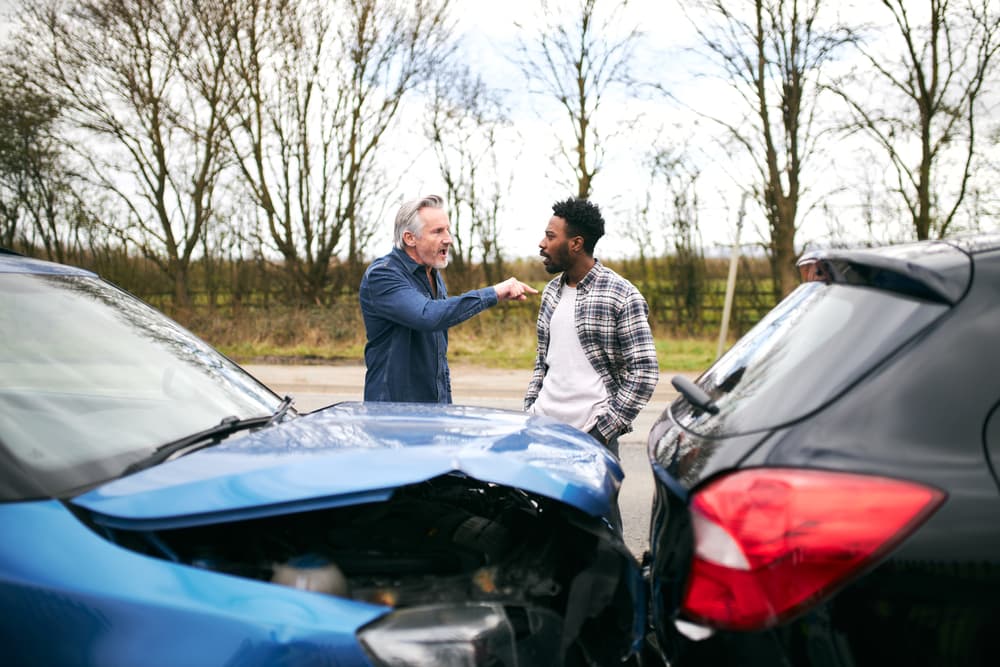The numbers surrounding car wrecks in Texas are staggering. When you hear about motor vehicle accident statistics, it is easy to see them as just data points on a chart. For thousands of Texans each year, however, these numbers represent a sudden and life-altering event.
They reflect real people, real families, and real communities from Austin to Waco and everywhere in between who are dealing with the consequences of a collision. Looking at the data helps reveal patterns and highlights the risks we all face on the road every day.
A Closer Look at Statewide Texas Motor Vehicle Accident Statistics
The Texas Department of Transportation (TxDOT) collects and reports data on crashes across the state. The sheer volume of traffic, from commuters on I-35 to trucks moving goods through the state, contributes to some sobering figures.

In a recent year, Texas saw hundreds of thousands of reported traffic crashes, resulting in tens of thousands of people sustaining serious injuries. A serious injury is one that is incapacitating, like a severe broken bone, internal injury, or paralysis.
These are not just big-city problems; they affect drivers on rural roads in the Hill Country and on the main streets of Killeen and Temple. The data consistently shows that certain behaviors are major contributors to these incidents.
Familiarizing yourself with these factors is the first step in recognizing the dangers on our roads. Top contributing factors in Texas crashes often include:
- Driver Inattention: This is a broad category that includes anything from looking at a phone to being lost in thought instead of focusing on the road.
- Failure to Control Speed: Driving too fast for conditions, even if it is below the speed limit, is a leading cause of collisions.
- Unsafe Lane Changes: Swerving or changing lanes without checking blind spots causes a significant number of wrecks, especially on multi-lane highways.
Common Causes Behind the Numbers: A Central Texas Focus
While statistics give us a broad overview, the causes behind them are deeply personal and often preventable. In the busy corridor stretching from north of Waco down through Austin, drivers face a unique mix of urban congestion, high-speed highways, and construction zones.
This environment magnifies the consequences of dangerous driving habits.
Distracted Driving and its Impact on Motor Vehicle Accident Statistics
A distracted driver is anyone who diverts their attention from the primary task of driving. In the time it takes to read a text message, a car traveling at highway speed covers the length of a football field.
On roads like the Mopac Expressway in Austin or the busy streets around Baylor University in Waco, a few seconds of inattention is all it takes to cause a serious pileup.
Common driving distractions include:
- Visual Distractions: Taking your eyes off the road to look at a phone, GPS, or even something happening on the sidewalk.
- Manual Distractions: Taking your hands off the wheel to eat, drink, or adjust the radio.
- Cognitive Distractions: Taking your mind off driving, such as being preoccupied with a personal problem or having a stressful conversation with a passenger.
Speeding: A Persistent Problem on Roads from Austin to Waco
Speeding is more than just breaking the law; it is a reckless choice that reduces a driver’s ability to react to unexpected hazards. Higher speeds mean longer stopping distances and more violent impacts.
A crash that might have been minor at 30 miles per hour becomes much more severe at 50 miles per hour. This is especially true on highways like US-190 that connect Killeen and Temple, where speed limits are high and traffic moves fast.
Speeding contributes to accidents in several ways:
- It significantly reduces the amount of time a driver has to perceive and react to a danger, like a car pulling out or a deer crossing the road.
- It makes it easier for a driver to lose control of the vehicle, particularly on curves or in poor weather conditions.
- It increases the severity of injuries because the force of the impact is much greater.
Impaired Driving’s Tragic Role
Driving While Intoxicated (DWI) continues to be a devastating issue across Texas. Alcohol and drugs impair judgment, slow reaction times, and reduce coordination. From the nightlife on 6th Street in Austin to gatherings near the Fort Cavazos community in Killeen, the risk of encountering an impaired driver is always present.
Every DWI-related crash is a preventable tragedy that leaves families to pick up the pieces. Making a plan before you go out is a simple way to avoid a terrible mistake. Consider these alternatives to driving after drinking:
- Designate a sober driver before the first drink is poured.
- Use a rideshare service like Uber or Lyft.
- Call a friend or family member for a ride home.
Where Do These Accidents Happen? High-Risk Areas in Our Community
Accidents are not entirely random. Data shows that specific locations and types of roads have a higher frequency of crashes. Knowing these risk factors helps you stay more alert when driving in and around your community.
Intersections are a primary hotspot for collisions. These are points where traffic moving in different directions crosses paths, creating a high potential for conflict. T-bone accidents, or side-impact collisions, are common at intersections and are particularly dangerous because the side of a vehicle offers less protection than the front or rear.
Features of high-risk locations often include:
- Busy Intersections: The more cars, trucks, and pedestrians crossing paths, the higher the chance of a mistake.
- Major Highway Corridors: Stretches of I-35 through Temple, Waco, and Austin see a massive volume of traffic daily, leading to a higher number of incidents from congestion, high speeds, and frequent lane changes.
- Rural Roads: While they may seem peaceful, country roads outside the main cities often lack shoulders, have poor lighting, and feature sharp curves, making them surprisingly hazardous.
The Financial and Personal Aftermath of a Collision
The impact of a car wreck goes far beyond the immediate scene. Once you are home and the initial shock wears off, you may start to face a growing list of challenges. The physical pain is often just the beginning.

The financial strain of a serious accident adds another layer of stress during an already difficult time. This is where you might hear the term damages. Damages is the legal term for the money awarded to a person as compensation for different types of losses caused by an injury.
These losses are often separated into different categories. Some are easy to calculate, while others are more personal and subjective. All of them represent a very real burden on the injured person and their family.
Common types of damages after a wreck include:
- Medical Expenses: This covers everything from the initial ambulance ride and emergency room visit to ongoing physical therapy, surgeries, medications, and future medical care.
- Lost Income: If your injuries prevent you from working, you may lose out on wages, salary, and other employment benefits. This also includes a diminished capacity to earn in the future if you are left with a long-term disability.
- Pain and Suffering: This compensates for the physical pain, emotional distress, and overall loss of quality of life resulting from the accident and your injuries.
Dealing with insurance companies, tracking medical appointments, and managing household bills while trying to recover is overwhelming. The costs add up quickly, and the pressure from insurance adjusters to settle for a low amount can be intense. Their goal is to close the case for as little money as possible. You get the resources you need to heal and put your life back together.
Clearing Up Common Questions After a Crash
What are the first steps I should take in the days after getting home from a car wreck?
After handling any immediate medical needs, the days following a crash are about organization and self-care. It is easy to feel overwhelmed, so focusing on a few key tasks can help you feel more in control.
- Follow all medical advice. Go to all follow-up appointments with your doctor. If you were prescribed medication, take it as directed. If you were told to rest, do not push yourself to return to work or strenuous activity too soon.
- Start a file for everything related to the accident. This includes the police report number, photos you took at the scene, the other driver’s information, and any correspondence you receive from insurance companies.
- Keep a simple journal. Write down how you are feeling each day, both physically and emotionally. Note any activities you are unable to do because of your injuries. This documentation is a powerful record of how the accident has affected your daily life.
Why is it so important to document everything?
Documentation creates a clear and detailed record of the accident and its consequences. When you are dealing with an insurance claim, the adjuster for the other driver will look for any reason to question the severity of your injuries or the value of your claim.
A strong collection of evidence helps counter their arguments. Your documentation serves several purposes:
- It provides a timeline of your medical treatment and recovery process.
- It tracks every dollar you have spent or lost because of the accident, from medical co-pays to lost wages.
- It helps paint a picture of your pain and suffering by showing how your life has changed since the collision.
The other driver’s insurance company called with a quick settlement offer. Should I accept it?
Insurance adjusters are trained negotiators who often contact injured people shortly after an accident. Their goal is to settle the claim of injuries quickly and for the lowest amount possible.
Accepting an early offer is tempting, especially when bills are piling up, but it is a decision with permanent consequences.
Before accepting any offer, consider the following:
- You may not know the full extent of your injuries yet. Some injuries, like whiplash or internal damage, do not show their full effects for days or even weeks. Once you accept a settlement, you cannot go back and ask for more money if your medical condition worsens.
- The initial offer rarely covers all your potential damages. It may cover your initial emergency room bill but fail to account for future physical therapy, lost earning potential, or your physical pain and emotional distress.
- You are not obligated to give a recorded statement. The adjuster may ask you to provide a recorded statement about the accident. You have the right to decline this request and speak with a legal professional first.
The information in these motor vehicle accident statistics is a reminder of the risks present on our Texas roadways. If the numbers have become your reality, you are not alone.

At Lorenz & Lorenz, PLLC, we see the people behind the statistics. We focus on helping individuals in Austin, Waco, and Central Texas who have been hurt in accidents.
If you are dealing with a collision, contact our team for a free consultation to discuss your situation. You can reach our Austin office at (512) 477-7333 or our Waco office at (254) 662-4800.